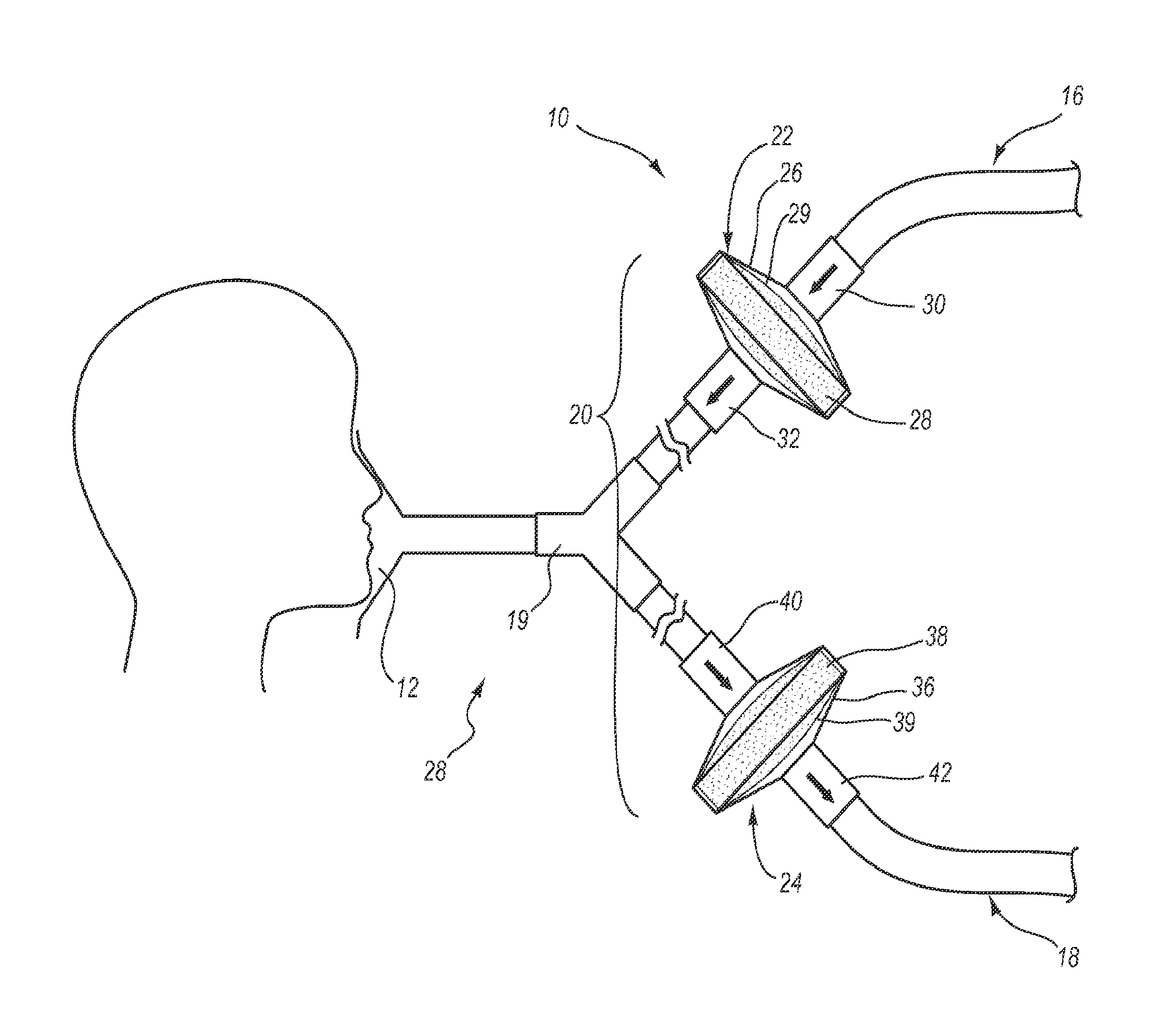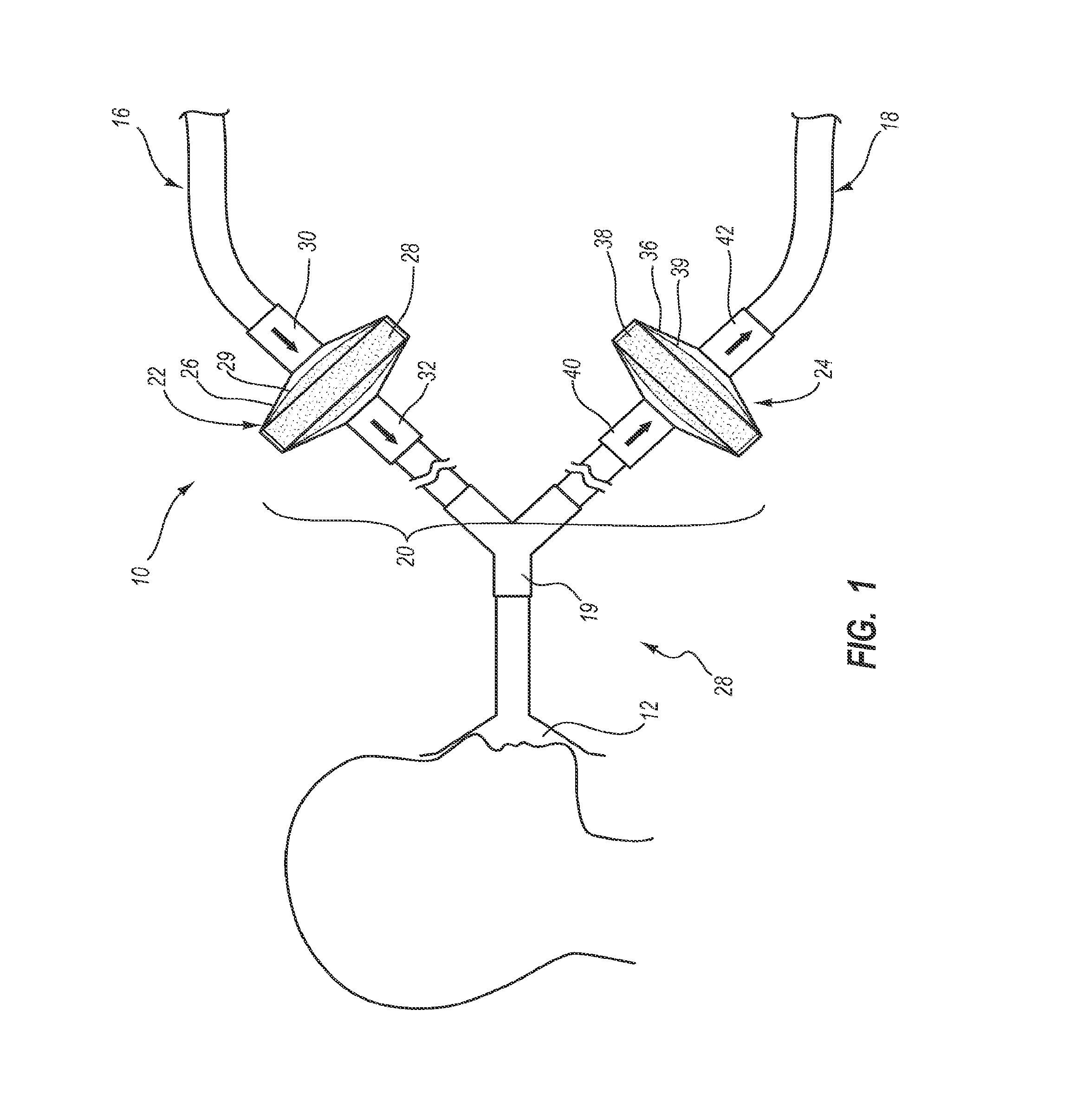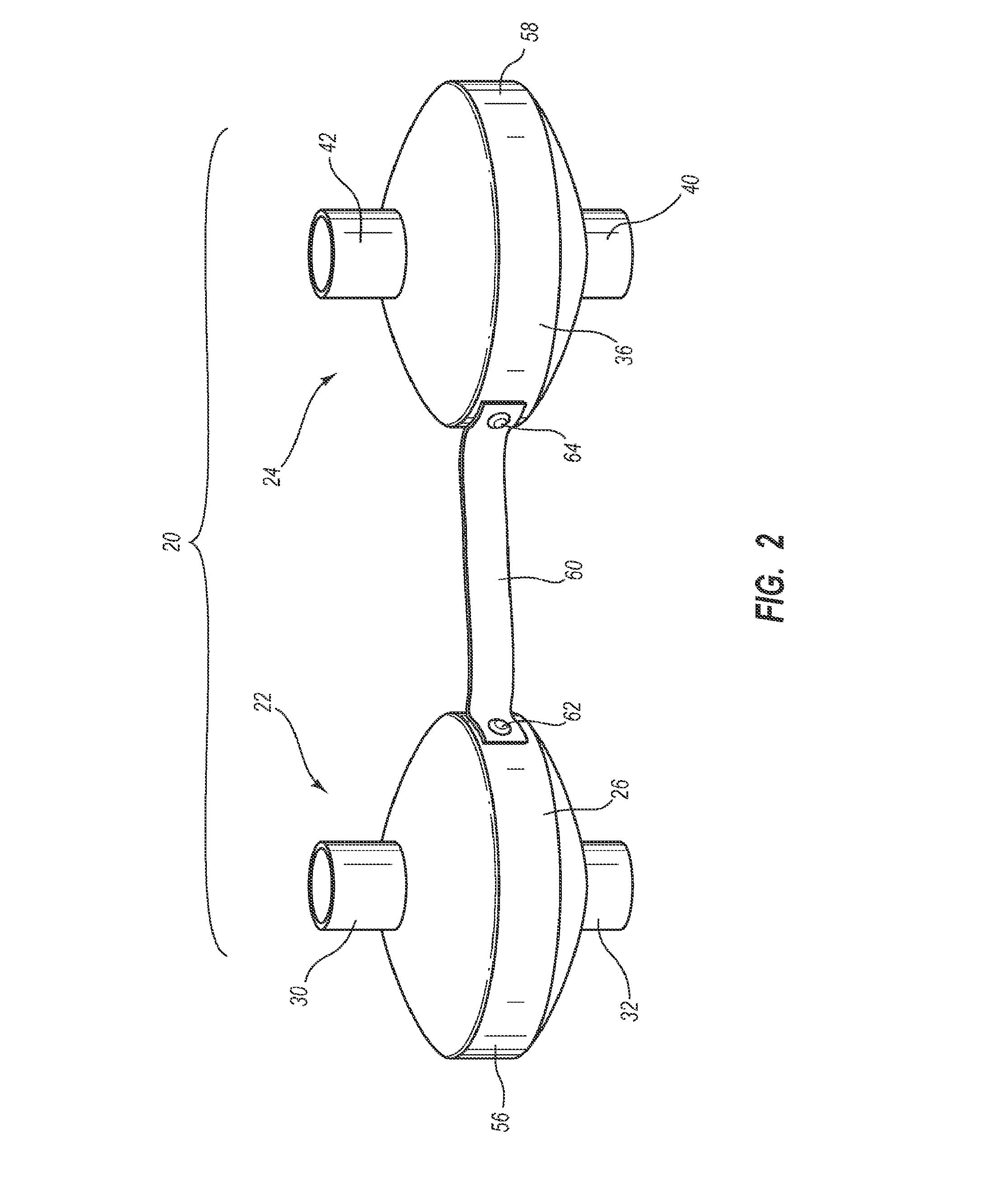System, Method and Apparatus for Removal of Volatile Anesthetics for Malignant Hyperthermia
a technology of volatile anesthetics and ventilation systems, applied in the field of systems, can solve the problems of reducing the resistance of the patient's overall breathing experience, the requirement to overcome the resistance provided by the filter, and the resistance to breathing experienced by the patient, so as to reduce the effects of malignant hyperthermia, effectively remove volatile anesthetics passing, and increase the rate of volatile anesthetic removal from the system
- Summary
- Abstract
- Description
- Claims
- Application Information
AI Technical Summary
Benefits of technology
Problems solved by technology
Method used
Image
Examples
Embodiment Construction
[0024]The present invention relates to systems, methods, and apparatus for removing volatile anesthetics from an anesthesia or ventilation system to minimize the effects of malignant hyperthermia in susceptible patients. According to one aspect of the present invention, a system for removing volatile anesthetics is provided. In the embodiment, a first filter component is placed in fluid communication with an inspiratory limb of an anesthesia or ventilation system such that volatile anesthetics will pass through the first filter component during operation of the anesthesia or ventilation system. A second filter component is operably coupled to the expiration port of the anesthesia or ventilation system such that gases passing through the expiratory limb of the anesthesia or ventilation system pass through the second filter component. The first filter component and second filter component are adapted to adsorb and effectively remove volatile anesthetics passing through the respective ...
PUM
 Login to View More
Login to View More Abstract
Description
Claims
Application Information
 Login to View More
Login to View More - R&D
- Intellectual Property
- Life Sciences
- Materials
- Tech Scout
- Unparalleled Data Quality
- Higher Quality Content
- 60% Fewer Hallucinations
Browse by: Latest US Patents, China's latest patents, Technical Efficacy Thesaurus, Application Domain, Technology Topic, Popular Technical Reports.
© 2025 PatSnap. All rights reserved.Legal|Privacy policy|Modern Slavery Act Transparency Statement|Sitemap|About US| Contact US: help@patsnap.com



